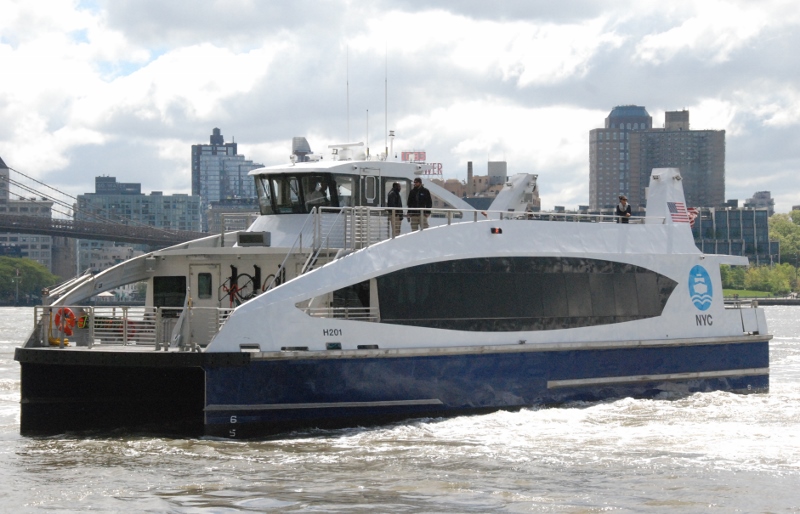New York City ferries and other operators on the East River continue to be delayed with a speed zone between the Brooklyn and Williamsburg bridges, as a spill cleanup continues around a power substation.
The regulated navigation area (RNA) requires vessels to maintain bare steerage speed and make no wake from 10 a.m. to 3 p.m. daily. The speed limit is needed to ensure work can continue around the Consolidated Edison Farragut substation on the Brooklyn side of the river, according to the Coast Guard Sector New York office.
A transformer failure at the site released dielectric fluid — a light mineral oil used in electrical components — on May 7, triggering a pollution response and the Coast Guard declaring a safety zone. Work still continuing on the river includes dive operations, boom maintenance and related activity, the Coast Guard said.
The speed restrictions are creating some headaches and delays for passenger operators, including the new NYC Ferry public system. Its East River routes have experienced 15- to 30-minute delays at times.
NYC Ferry’s online staff used Facebook to advise customers: “Due to the continued mandatory slow down on the East River by the US Coast Guard following the Con-Ed oil spill. The East River route will be subject to delays throughout the day.
“We apologize for the inconvenience.”
The restrictions are being broadcast by the Coast Guard hourly on VHF channel 22A, and enforced by small boat patrols in the river. Violating an RNA is a federal offense, “with a significant fine as a potential consequence,” Coast Guard officials warned.




